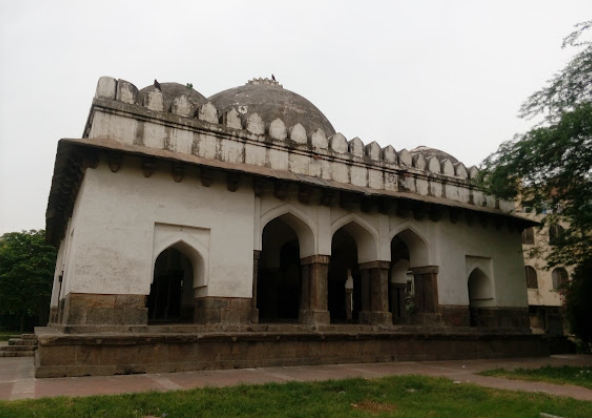In this article, we will explore the Lal Mahal from the times of the Delhi Sultanate.
What is the Lal Mahal in Delhi?
Lal Mahal, also called ‘Kushk-i-Lal,’ is the first Islamic Palace that ever survived through these 800 years and is a relic of the Delhi Sultanate, an era that rose in the 13th Century. It is located in the Nizamuddin Basti.
Who built the Lal Mahal Palace?
The palace was constructed by Ghiyasuddin Balban, a prominent nobleman in the court of the Sultan of Delhi, who later became the king himself. Balban oversaw the construction of several buildings, including the Kushk-i-Lal, during his tenure as a regent.
The Kushk-i-Lal Palace, or Lal Mahal, was constructed in the 13th Century and is a beautiful example of the architectural style of the Delhi Sultanate. The building is made of red sandstone and features a central courtyard with a water channel, which was used to keep the building cool during the hot summer months. The building also has several rooms, halls, and chambers that were likely used for various purposes, such as residences or hunting lodges.
What is the architecture of the Lal Mahal?
The Lal Mahal, which depicted the first of its kind underground cellars or rooms, also known as tykhanas, provided a cooling respite to the royals during the summer months of Delhi. It saw a central dome-shaped roof and chambers attached to the pavilions, each facing in four directions. The outer ornamental roof-like projections were decorated intricately. Hence, the entire palace was constructed over a base that was a roof of the king’s basement chambers (or tykhanas) during the summer months.
However, it was recently seen destroyed, with only a partial portion left intact. The palace once showcased impressive and well-carved chhatris, or umbrella-shaped structures made of red sandstone, which were partially demolished in 2008. Historical books state that a Moroccan traveller named Ibn Battuta had once stayed in this beautiful Red Palace during his visit to Delhi. He wrote about the palace in his journals and explained the grandeur of the place.
The Palace in the Present
The Archaeological Survey of India (ASI) deemed this palace a protected monument in 1910. It is now in ruins, with some parts demolished and others still existing. It is unclear what remains and what exists. A historian named Zafar Hassan quoted in his reports that the Lal Mahal was an architectural delight that would increase in value immensely in the coming years. Being a heritage site, it is a priceless 800-year-old masterpiece.

Lal Mahal in the Nizamuddin Basti has a rich history and is known for its architecture, culture, and cuisine. The area is still a vibrant centre of Sufi culture and attracts visitors from all over the world.
- Is Delhi metro free for ladies? - November 27, 2022
- Is Delhi Metro profitable? - November 27, 2022
- List of biggest hospitals in Delhi - November 25, 2022


